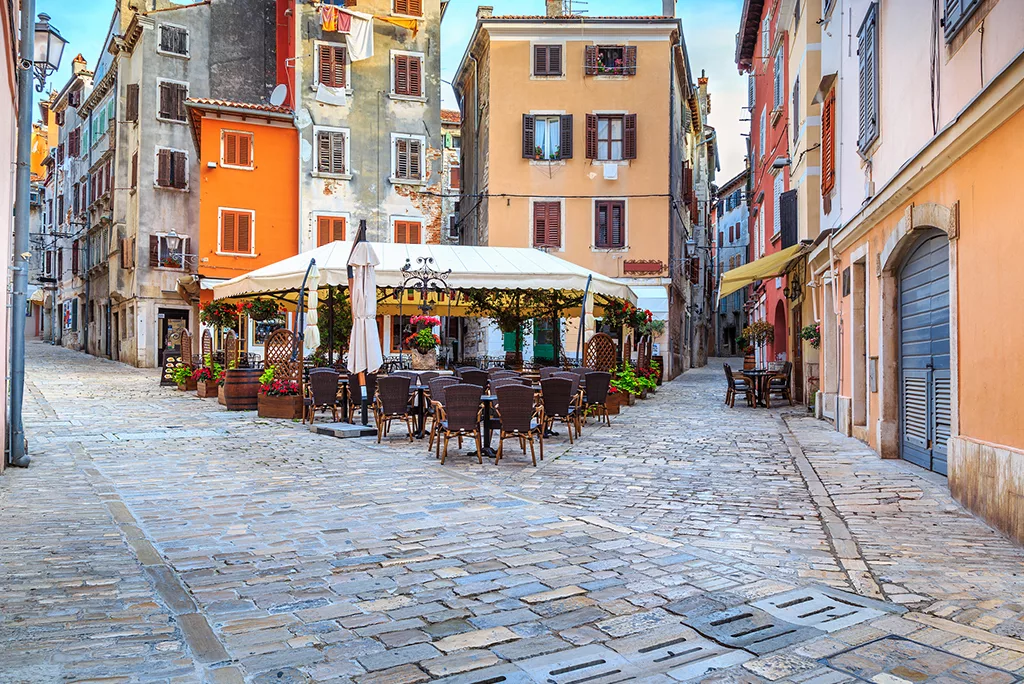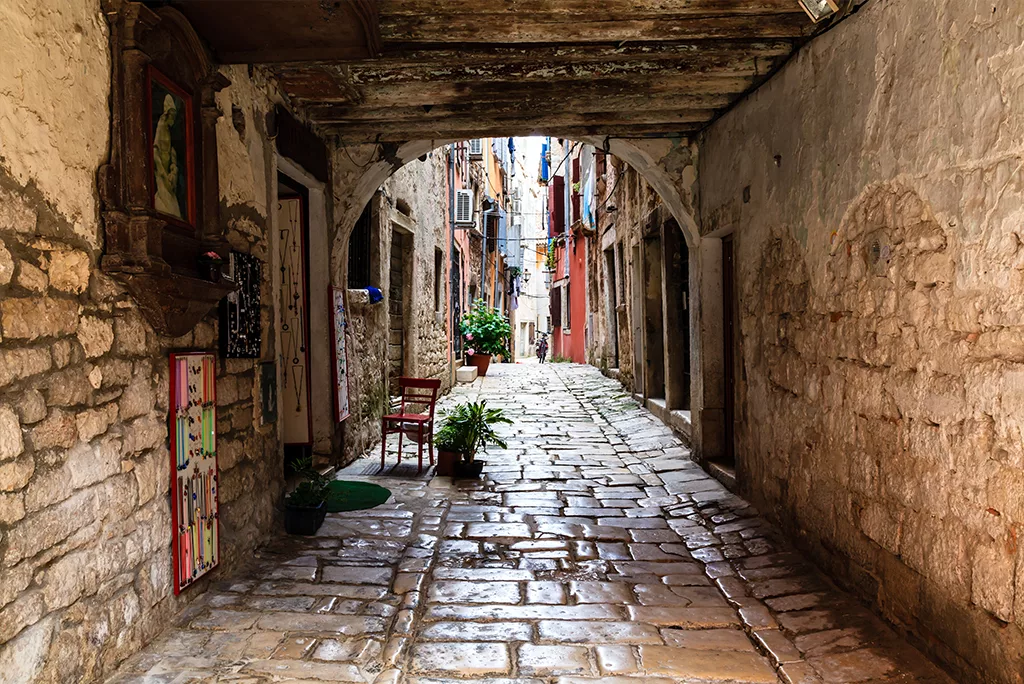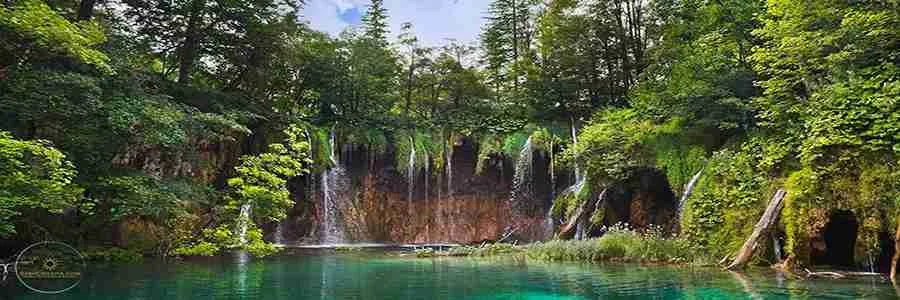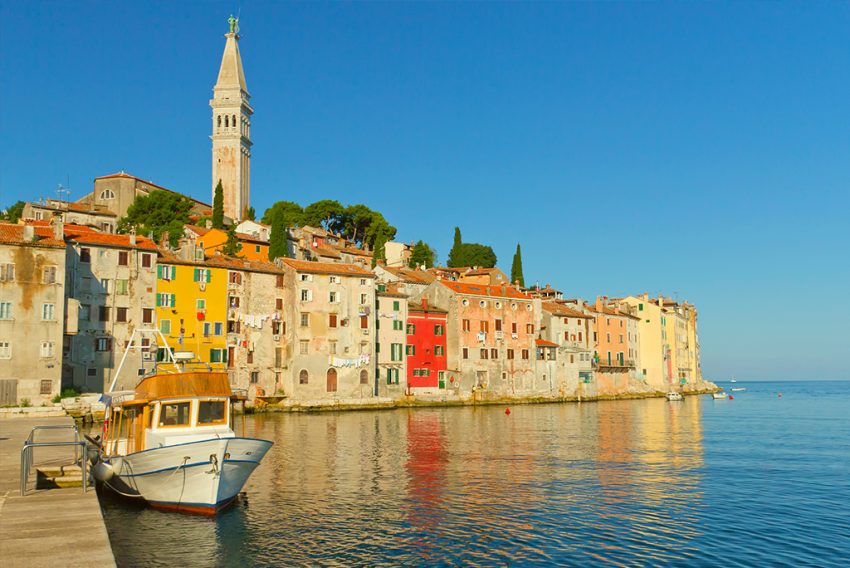Rovinj, a small town located on the Istrian peninsula, has a rich and varied history that spans several centuries. From its humble beginnings as a small island refuge to a thriving maritime center, and a hub of industry. Rovinj has undergone a series of transformations that have shaped the town into what it is today. In this article, we will delve into the history of Rovinj and explore the key events, developments, and cultural influences that have shaped this charming town over the years.

Rich History of Rovinj: The Earliest Evidence of Life in Rovinj
The exact period of Rovinj’s development is uncertain. The first written reference to the town can be found in a work named “Cosmographia” by a Ravenna resident in the 5th century. The town was referred to as “Castrum Rubini” and was located at the site of present-day St. Euphemia’s parish church. At the time, Istria was under Roman occupation. The invasions of the Huns, Ostrogoths, and Byzantines in the 5th century forced the inhabitants to seek refuge on the island of Rovinj, which had around a hundred residents.
The Legend of Rovinj and the Lost City of Cissa
While there is no concrete evidence to support the existence of a nearby town called Cissa, legends persist of a town that was referred to as the “Rovinj an Atlantis.” The town supposedly sank in the 6th or 7th century due to an earthquake: Its residents are said to have populated Rovinj. Despite the lack of evidence, this intriguing legend has captured the imagination of locals and visitors alike and remains a fascinating part of Rovinj’s cultural heritage.

Rich History of Rovinj: Rovinj Under Frankish, Venetian, and Austrian Rule
From 788, Istria was under Frankish rule, and the cities of Istria started fighting for autonomy during a turbulent period marked by invasions from various raiders such as Slavs, Neretva area inhabitants, and Saracens. The town eventually fell under Venetian rule in 1283. Rovinj developed into a thriving fishing, shipbuilding, and maritime center. Especially in the 17th and 18th centuries when it became the leading city in Istria. During this period, the town walls were fortified, and the town expanded to the mainland. Eventually becoming a peninsula when the channel between the mainland and the island was filled in 1763. With more than 8,000 inhabitants and many houses, the present-day St. Euphemus parish church was built in the mid-18th century.
In 1797, the Venetian Republic lost power, and Istria was briefly under Austrian rule, followed by Napoleon’s rule. From 1809 to 1813, Istria was a part of Napoleon’s Illyrian provinces, and in 1813, the Austrians regained power. This marked the beginning of a period of industrial and urban development. With the construction of cement production facilities, a tobacco factory, a wax factory, a glass and sardine factory, and more. The shipbuilding industry was also flourishing, and the southern part of the town had six small shipyards, one of which is still in operation today.
Rich History of Rovinj: Modern Developments and Connections
In the 19th century, the town is connected by railway and has light gas introduced in 1905 and telephone service in 1906. The Japanese consul in Trieste, J.G. Huetterott, even bought one of Rovinj’s islands, today’s Red Island, in 1890. During this time, many Rovinj residents moved to Pula, which was the largest naval port in the Austria-Hungary monarchy.
After the fall of the monarchy in WWI, the town was under fascist Italy until 1943. Then German occupation till the end of WWII. Rovinj was part of Yugoslavia from the mid-20th century until 1991. When Croatia sought independence and gained recognition the following year. Over the centuries, the population of Rovinj has fluctuated between 12-15k and currently stands at 14,000.
Nearby: Umag – Istria

